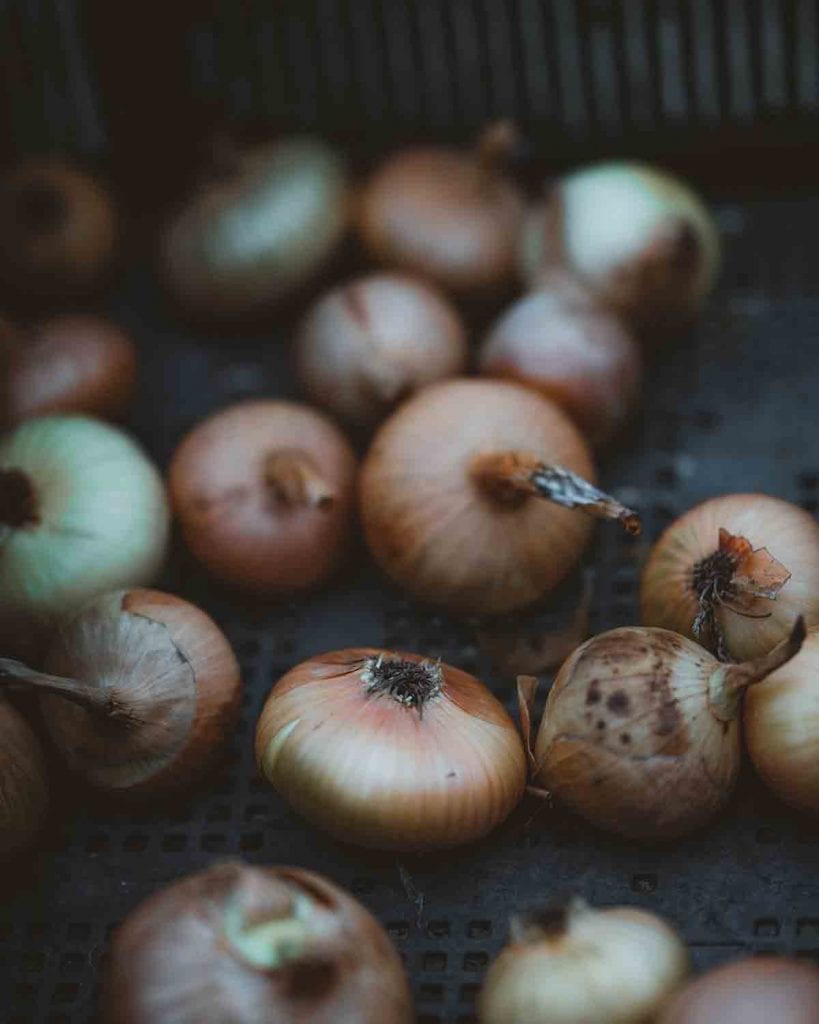Eating sustainably doesn’t have to be difficult. A few simple changes can effectively minimise your carbon footprint and cultivate eco-friendly habits that’ll last a lifetime. Let’s take a look at a few ways to eat more sustainably…

1. Dine Local
If you live in the U.S. your food travels approximately 1,500 miles to reach your plate. Why is this such a big deal? Well, this long-distance food transportation contributes large quantities of fossil fuels to the atmosphere, thereby increasing your carbon footprint. Thus, it’s more sustainable to dine at farm-to-table restaurants, frequent the farmer’s market and buy fresh, local produce as often as possible.
2. Harvest Your Own Crops
Large industrial farms use fertilizers and pesticides, which can run off into streams and lakes and damage fragile ecosystems. Producers also spray ripe fruits and vegetables with chemicals to keep them from rotting during transportation. Unfortunately, these substances can negatively impact your health so, if you want to keep yourself and the environment safe, starting your own garden is an excellent solution.
Keep a small herb garden on your kitchen counter and grow tomatoes, cucumbers and even raspberries in the summer. Using your own land to feed your family can also conserve resources like land and even water if you harvest rainwater to grow your crops.
3. Enjoy Whole Foods
Filling your shopping cart with fresh, whole foods is another great way to eat more sustainably. These items don’t contain added sugars or salts and have little to no packaging, which minimises waste and your waistline. Toss fruits and vegetables in reusable grocery bags for a few sustainability bonus points and buy organic when possible. Organic farming enhances biodiversity, making it a more sustainable alternative form of food production.
4. Substitute with Seafood
Meat production contributes heavily to pollution, deforestation, soil degradation and water stress, and the industry grows 2% to 3% every year. Livestock also takes up 77% of all agricultural land. Yet, meat and dairy account for just 33% of global protein intake. This major deficit signals unsustainable dietary practices that must change if humans are to survive.
Swapping meat for seafood could provide at least a partial solution. By consuming sustainably sourced lobster, you can effectively minimise your carbon footprint and increase global food security. Try expanding Meatless Mondays by using responsibly sourced seafood, jackfruit or tofu as a substitute for steak, bacon and other animal products.
Between 30% and 40% of the U.S. food supply goes to waste each year.
– USDA
5. Cut the Waste
Of course, stocking up on clean, organic, sustainable food doesn’t mean a thing if it ends up in the trash. Between 30% and 40% of the U.S. food supply goes to waste each year. In most cases, this massive amount of rubbish is a direct result of human carelessness and overconsumption. In other words, consumers’ eyes are bigger than their stomachs.
Therefore, when striving to eat more sustainably, it’s crucial that you practice mindful eating and only buy what you need at the grocers. Otherwise, you not only waste food but the resources used to produce, package, distribute and dispose of it.
One Step At a Time
Sustainable actions are, by definition, endurable. Therefore, any eco-friendly decisions you make must become habits if you truly want to cultivate a more sustainable lifestyle. The key to your success lies in starting small. Take one small step in the right direction every day — or maybe every year. Eventually, these tiny changes will build on one another and you’ll be eating sustainably before you know it.
“No matter how complex global problems may seem, it is we ourselves who have given rise to them. They cannot be beyond our power to resolve.”
– Daisaku Ikeda
Photo by Annie Spratt




